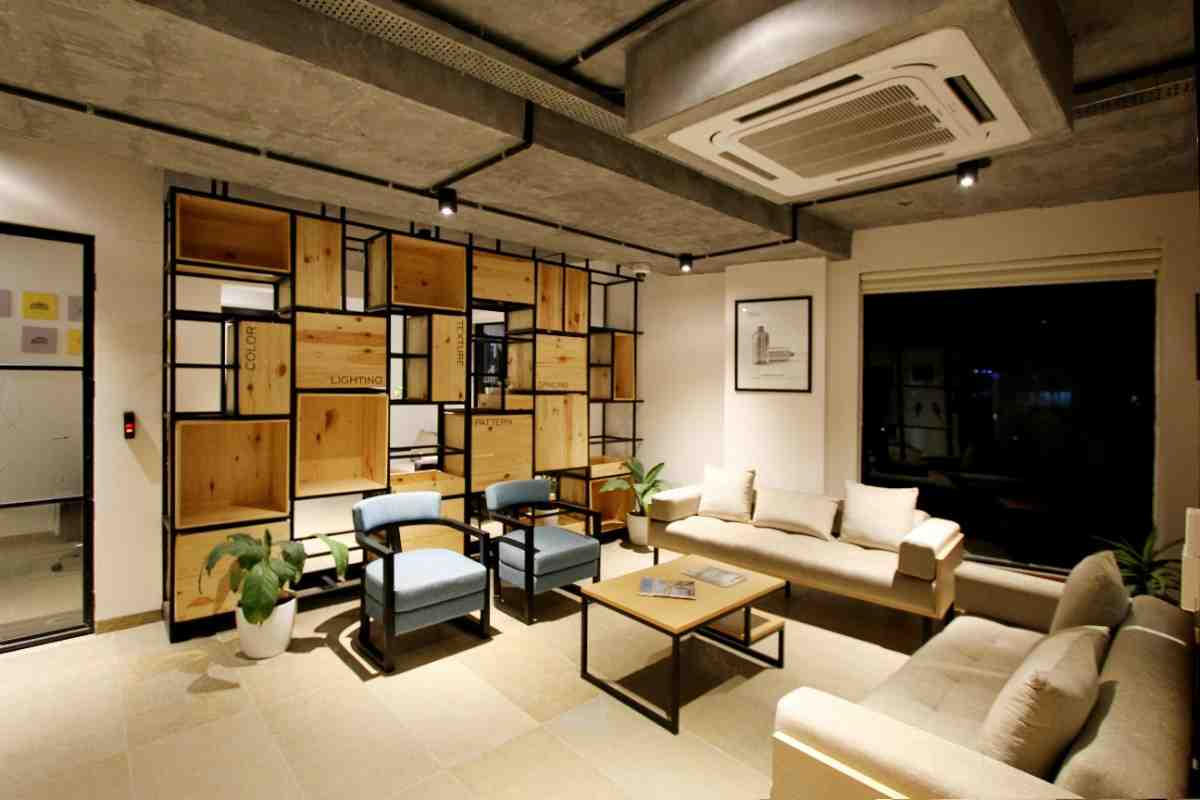Because it provides homeowners with greater convenience, efficiency, and security, smart home technology has emerged as a crucial component of luxury homes. But incorporating smart home technology into your opulent home necessitates meticulous preparation, particularly with regard to budgeting. It’s critical to properly plan your smart home upgrades, whether your goals are to increase energy efficiency, automate your lighting, or improve your home security.
We’ll take you through the crucial process of creating a budget for smart home improvements in a high-end home in this tutorial. These suggestions will assist you in controlling expenses while designing the house of the future, from determining your needs to setting priorities for improvements.
Recognize the Price of Upgrades to Smart Home

It’s critical to comprehend the costs associated with smart home modifications before making any changes. The intricacy of the system and the gadgets you select can affect the cost of smart home equipment. Higher-end equipment and integration are usually needed for luxury houses, which can raise expenses.
Important Elements Affecting Prices:
- Smart device type: Common smart gadgets that you might want to install include automated shades, home security cameras, lighting controls, and thermostats. The cost of a device increases with its sophistication and level of advancement.
- Systems for Home Automation: It can be expensive to install high-end automation systems that manage every device in the house. The size and design of your house affect how much installation and customization will cost.
- Installation Charges: Many smart gadgets need to be professionally installed, especially when they integrate with your home’s HVAC or electrical systems, but some can be done-it-yourself.
- Maintenance and Updates: The total cost of smart devices may increase with ongoing maintenance and system upgrades.
You can more efficiently arrange your budget if you have a general understanding of the prices involved.
Establish Your Priorities
Upgrades to smart homes are not all made equal. While some upgrades—like smart thermostats—may result in significant energy savings, others—like high-tech home theaters—may give greater luxury without any noticeable utilitarian advantages right away. You can concentrate your spending on the most worthwhile improvements by identifying your priorities.
Things to Think About When Upgrading Your Smart Home:
- Home Security: You may greatly increase the security of your opulent home by upgrading to smart locks, cameras, motion sensors, and video doorbells.
- Energy Efficiency: Automated blinds, smart lighting controls, and smart thermostats may maximize energy efficiency and reduce utility costs, making them an affordable investment.
- Entertainment Systems: Media servers, sound systems, and smart home theaters may all produce an immersive atmosphere in opulent houses.
- Convenience and Automation: Smart refrigerators, voice-activated assistants, and automatic lighting enhance daily convenience and quality of life.
You may allocate your budget appropriately after figuring out which parts of your house would benefit the most from improvements.
Establish a Reasonable Budget
It’s time to establish a reasonable budget now that you are aware of the expenses and have ranked your upgrades. Upgrades to smart homes need careful budgeting, just like any other significant expenditure.
How to Create a Budget:
- Assess Your Present Financial Situation: Examine your present financial status, taking into account your earnings, outlays, and savings. Find out how much of your disposable cash you can use to enhance your smart home.
- Calculate the Total Cost: Estimate the overall cost, taking into account both hardware and installation expenses, based on the systems and devices you intend to install. For more precise estimates, think about obtaining quotes from qualified installers.
- Make Room for Unexpected Expenses: Upgrades to smart homes might occasionally result in unforeseen expenses like more wiring or electrical work. 10% to 15% of your overall budget should be set aside as a contingency to cover unforeseen costs.
You can proceed with your upgrades without running the risk of going over budget if you have a defined budget in mind.
Examine and contrast smart home appliances
With so many alternatives available, smart home technology is developing quickly. Researching and comparing the gadgets you are interested in is crucial when creating a budget for upgrades to make sure you are getting the greatest deal.
Advice for Smart Device Research:
- Examine reviews: To learn more about the features, performance, and dependability of the gadgets you are considering, look for product reviews from reliable sources.
- Examine prices: Brands and shops might have very different prices. To get the best prices on your smart home appliances, compare prices.
- Verify Compatibility: Make sure the gadgets you choose operate with the systems in your house already in place, such as the Wi-Fi network and the electrical systems.
- Think About Long-Term Value: Some gadgets could be more expensive up front, but they might save money over time or have additional features. When comparing possibilities, take the return on investment into account.
You may make well-informed judgments that suit your demands and budget by conducting in-depth research.
Examine Do-It-Yourself vs. Expert Installation
The installation procedure is one of the most important elements influencing the price of smart home upgrades. Some gadgets are simple to install yourself, but others need to be professionally installed, particularly if they need to be connected to the infrastructure of your house.
DIY Installation’s Benefits and Drawback
- Advantages: More control over the procedure, cheaper installation expenses, and a chance to become familiar with the technology.
- Cons: The possibility of errors that could result in broken equipment or harm to your home’s systems.
Benefits and Drawbacks of Expert Installation - Advantages: Expert installers can guarantee that devices are integrated and installed correctly, saving you time and lowering the possibility of mistakes.
- Cons: Higher initial expenses as a result of labor and professional fees.
DIY installation can be a more affordable choice if you are tech-savvy and possess the requisite abilities. However, hiring a professional installer is frequently worthwhile for more complicated systems.
Examine your options for financing
There are a number of financing options to take into account if the cost of smart home upgrades is more than your present budget. You can make your upgrades now and pay for them later with financing.
- Financing Options to Consider: Home Equity Loans or Lines of Credit To finance your smart home renovations, you might be eligible for a home equity loan or line of credit if you own a luxury property with a sizable equity.
- incentives on Credit Cards: A lot of credit cards provide incentives or cashback for purchases. This can be an excellent method of funding minor improvements if you are able to handle the payments.
- Retailers’ Installment Plans: For smart home equipment, several retailers have financing options that let you stretch the expense over a number of months or years.
Before committing to any financing choices, be sure you comprehend the interest rates and terms of payment.
Pay Attention to Upgrades That Add Value
Prioritizing improvements that increase the value of your house is crucial when making the switch to a smart home. If you intend to sell your house in the future, smart home technologies can make it more appealing to potential purchasers.
High-End Smart Home Improvements:
- Smart Security: By enhancing safety and providing prospective buyers with piece of mind, gadgets like smart cameras, alarms, and locks can add a substantial amount of value.
- Energy Efficiency: Homebuyers seeking to reduce utility bills are drawn to smart thermostats and energy-saving gadgets.
- Smart Lighting: Automated lighting solutions can make your home more opulent and useful, which will attract potential purchasers.
You can make sure that your investments in smart homes are profitable by concentrating on modifications that offer long-term benefit.
Make Plans for Upcoming Smart Home Additions
Since smart home technology is always changing, your needs could also alter over time. Making space in your budget for upcoming additions and improvements is crucial.
How to Prepare Your Smart Home for the Future:
- Select Systems That Are Scalable: Purchase integrated home automation systems that support additional devices or other smart home systems that enable future growth.
- Keep abreast on emerging technologies: To keep your property current and competitive in the luxury market, keep an eye on new developments in smart home technology.
- Making plans for future additions guarantees that your smart home will continue to be contemporary and useful for many years to come.
In conclusion
Upgrades to a luxury house’s smart home can improve energy efficiency, convenience, and security, but they come with a price tag. You may maximize your smart home investment by being aware of the costs, creating a clear budget, prioritizing updates, and looking into financing possibilities.
Smart home technology is a smart investment that can improve your lifestyle, whether you’re improving your house for personal use or raising its worth for future selling. Enjoy the advantages of a fully integrated and future-proof luxury home while remaining organized and conducting research.





